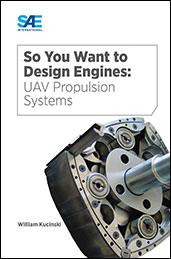Video

Spotlight on Design Insight: Sensors: Fluid Measurements and Avionics
2015-05-07
Spotlight on Design: Insight features an in-depth look at the latest technology breakthroughs impacting mobility. Viewers are virtually taken to labs and research centers to learn how design engineers are enhancing product performance/reliability, reducing cost, improving quality, safety or environmental impact, and achieving regulatory compliance. The quality of fluids used in aviation, such as oil or fuel, is an extremely important safety issue. One way to reliably monitor fluids is through the use of special measurement sensors. In the episode Fluid Measurements and Avionics (9:13), an engineer at Meggitt demonstrates the capabilities of time-domain reflectometry sensors, explaining how they are assembled and used. The business case for monitoring oil and fuel degradation, and how to proactively take advantage of preventative maintenance is also explained.

